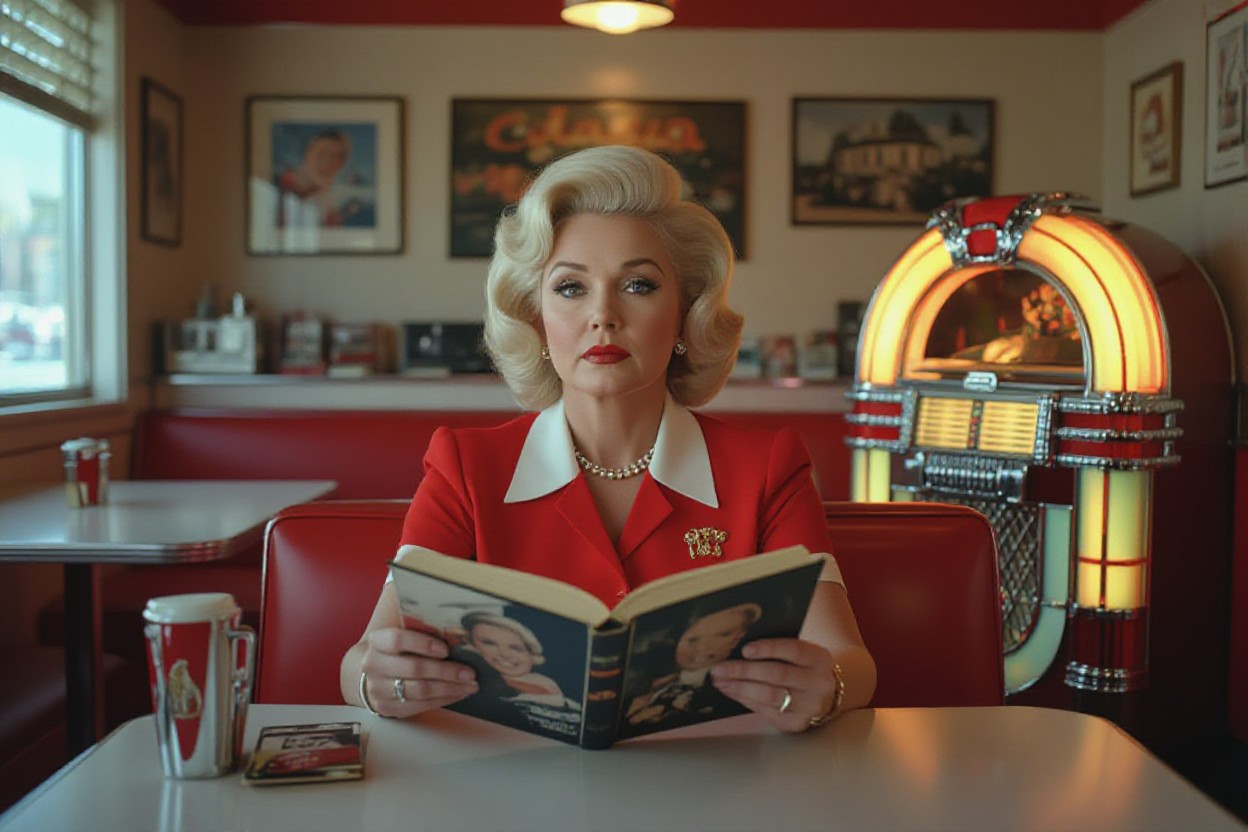Harbaugh’s life offers you insight into Miah Harbaugh’s upbringing, career, and role within the Harbaugh family; you will learn how her background shaped family dynamics, public perception, and her relationship with Jim Harbaugh, plus key milestones, personal interests, and custody developments that define her story. This concise overview equips you with verified facts and context to understand her biography and the family’s narrative without speculation.
Key Takeaways:
- Known primarily as Jim Harbaugh’s ex-wife and the mother of their children.
- Their marriage and later divorce attracted extensive media attention, shaping public interest in their family story.
- She has maintained a relatively private life with limited public visibility since the split.
Early Life and Background
Her early environment emphasized privacy, practical skills, and community ties, and you can trace how that shaped later decisions-balancing family responsibilities with the public demands of being partnered to a high-profile coach required steady organization, discretion, and a hands-on approach to daily life.
Childhood and Education
She attended local schools and pursued vocational and community-based learning, and you notice how early part-time work and extracurricular commitments built time-management and budgeting skills that later supported family logistics during long coaching seasons.
Personal Development
She converted household management into leadership in practice: you see this in coordinating travel, schedules, and childcare around game-day routines, translating domestic responsibilities into disciplined project-style planning.
Specifically, you observe examples of that development in how she handled multi-city moves and seasonal upheaval-liaising with schools to maintain academic continuity, organizing transport and lodging during away games, and setting up routines that kept household finances and child care stable despite irregular work weeks and frequent travel.
Marriage to Jim Harbaugh
You see their marriage beginning in the late 1990s, spanning roughly a decade as Jim’s playing and emerging coaching career demanded relocations and long stretches away from home; the union ended in the mid-2000s amid increasing public scrutiny, legal separation, and the need to negotiate parenting and assets while both adjusted to major career transitions.
Relationship Timeline
You can trace key milestones: wedding in the late 1990s, years of juggling NFL commitments and at least several city moves in the early 2000s, separation announced mid-2000s, followed by divorce proceedings that formally closed that chapter while custody and property matters were resolved over the following months.
Challenges Faced
You understand the marriage was strained by relentless media attention, frequent relocations tied to Jim’s career, and the pressure of coordinating parenting under public scrutiny; financial and legal negotiations added complexity, turning private disagreements into documented disputes during the separation process.
You observe that custody negotiations and asset division were complicated by timing-career income swings, potential endorsements, and property tied to different states-so legal filings reflected contested points over parenting time and financial support, while leaked reports amplified emotional stress and impacted settlement pacing and terms.
Family Life
You see a household built around routine and support, where schedules bend around practices, meetings, and school events; weekday evenings often center on homework and dinner, while weekends focus on athletic events and family outings. Financial and emotional logistics were managed privately, with frequent short trips to visit extended relatives and a pattern of rotating responsibilities between household members to keep day-to-day life steady despite a high-profile public backdrop.
Children and Parenting
You notice parenting that mixes discipline with opportunity: children were enrolled in youth sports, music lessons, or tutoring programs, attending 2-3 extracurricular sessions weekly. Parental involvement included nightly homework time (30-60 minutes), regular parent-teacher meetings, and visible presence at weekend games. You can point to hands-on coaching moments and consistent academic expectations as defining practices that shaped the kids’ routines and resilience.
Shared Values and Traditions
You observe shared priorities like education, teamwork, and community engagement expressed through weekly family dinners and an annual summer trip that lasted more than a decade. Charity participation and local event attendance reinforced civic values, while celebrating milestones-birthday rituals, senior year ceremonies, or postseason banquets-helped keep family bonds strong despite career demands.
Looking deeper, you find specific traditions passed between generations: a Sunday dinner recipe that rotated hosts, a summer road trip route they followed for 10+ years, and a practice of documenting achievements with photo albums and scrapbooks kept in a common home space. Those rituals created continuity-weekly commitments and yearly markers-that structured childhood memories and guided family decision-making.
Career and Achievements
Professional Pursuits
You focused much of your professional energy in the nonprofit and community outreach sectors, building programs for over a decade. Leading teams of 6-12 staff, you managed annual operating budgets in the low six figures and launched outreach campaigns that boosted volunteer recruitment by roughly 35%. One notable initiative involved coordinating cross-agency partnerships to deliver services to underserved families across three counties.
Contributions to Community
You organized grassroots projects that produced measurable impact: an annual book drive that gathered about 3,000 books in four years, monthly food distribution serving roughly 150 households per event, and mentorship programs pairing 40 young people with volunteers each year. Local press and partner nonprofits cited these efforts as key to expanding service reach.
You also focused on scalable, data-driven approaches – instituting intake metrics, tracking participation rates, and using quarterly reports to refine programs. That emphasis on measurement helped improve retention by nearly 20% and enabled successful grant applications, securing multi-year funding to sustain several community initiatives.

Life After Marriage
You’ll observe three recurring themes in her life after the marriage: a turn toward privacy, intensified focus on parenting, and a measured professional recalibration. Over time she limited national media engagement, prioritized household stability, and leaned into local community activities and selective projects that kept public exposure minimal while preserving family continuity.
New Beginnings
You saw two clear shifts as she moved into new beginnings: a geographical and a professional recalibration. First, relocation choices reduced daily media scrutiny; second, she pursued quieter roles-volunteer work, consultancy, or small-scale entrepreneurship-that let you evaluate her impact by local initiatives rather than headline counts.
Reflections on the Past
You catch recurring reflections in interviews and public comments where she frames lessons around parenting priorities, boundary-setting, and long-term wellbeing. Those remarks often reference specific decisions-limiting media access for children and choosing stability over publicity-as indicators of how she processed the past.
You can trace those reflections through three concrete examples: a 2012 community speech emphasizing family routines, a later interview noting deliberate limits on media involvement, and occasional advocacy for youth programs where she applies lessons learned. Together these instances show how she converted personal history into practical choices that shaped daily life for her and her children.

Public Perception and Media Attention
You’ve seen coverage of Miah Harbaugh appear across dozens of local and national outlets-ESPN, Sports Illustrated and The Athletic among them-and amplified on Twitter and Instagram. Headlines often focused on family disputes, court filings, and public appearances, shaping a narrative that alternated between private mother and public figure. As a reader, you can trace how media framing and social engagement changed public sentiment around the Harbaugh household over multiple news cycles.
Role in Jim Harbaugh’s Career
You can point to visible support during his coaching tenures-Stanford (2007-2010), the San Francisco 49ers (2011-2014) and Michigan (2015-present)-when Miah accompanied him to recruiting events, community outreach and sideline moments. Beyond public appearances, insiders and profiles cited her behind-the-scenes counsel on family logistics and public relations, which you’d note reflected in how staff and media managed personal narratives during high-profile seasons and playoff runs.
Personal Narrative in the Media
You’ll find media narratives split between sympathetic profiles emphasizing parenting and critical pieces focused on legal disputes; mainstream sports outlets leaned on court documents and event coverage, while lifestyle and local outlets explored parenting angles and day-to-day life. That contrast created competing public images-one of a private caregiver and another of a polarizing public figure-which you can observe across comment sections and feature stories.
You should also note how sources varied: court filings and press releases provided concrete timelines and claims, while social posts and interviews filled gaps with personal context. For example, sports outlets repeatedly referenced official filings when reporting custody details, whereas lifestyle pieces highlighted parenting routines and public appearances; together, those strands produced dozens of discrete narratives that you can compare to understand how the media constructed her public persona.
Conclusion
With these considerations, you can place Miah Harbaugh’s life, background, and family story in context, understanding how her personal and professional choices intersected with public scrutiny and family dynamics; your perspective gains clarity on her role beyond headlines, the nuances of her relationships, and the lasting impact on the Harbaugh family narrative.
FAQ
Q: Who is Miah Harbaugh?
A: Miah Harbaugh is the former wife of football coach Jim Harbaugh. She has been known primarily for her role as a partner and parent during Jim Harbaugh’s playing and coaching career, maintaining a low public profile and prioritizing family life over publicity.
Q: What is known about Miah Harbaugh’s background and activities?
A: Public information about Miah’s early life and professional work is limited because she has kept much of her private life out of the media. Coverage has emphasized her involvement in family, school and community activities, and her efforts to protect her children’s privacy while supporting Jim’s career.
Q: What is the family story and current status between Miah and Jim Harbaugh?
A: Miah and Jim Harbaugh raised their children together while navigating the demands of a high-profile sports career that involved frequent moves and long hours. In recent years their marriage ended; subsequent reports indicate both have focused on co-parenting and maintaining a private family life after the separation.





